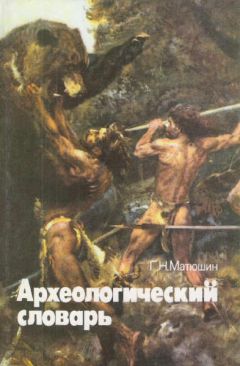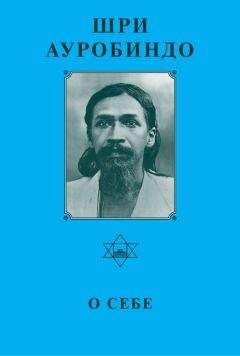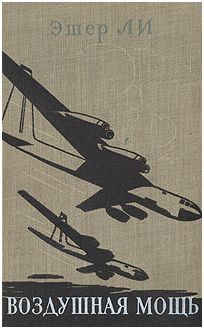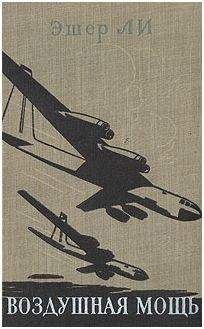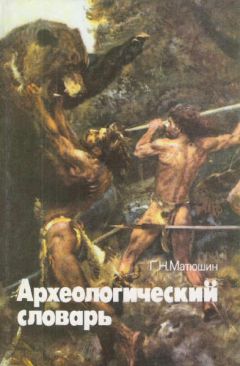Крис Огилви-Геральд - Проклятие Тутанхамона
70Deut. 2: 10.
71Deut. 2: 11.
72Gen. 6: 4, Num. 13: 33. See Collins, From, the Ashes of Angels, for a full account of the relationship between the Anakim, Nephilim and the Watchers of the «Book of Enoch».
73Gen. 36: 20.
74Gen. 14: 6
75Deut. 2: 12, 16.
76Gen. 36: 8.
77Gen. 36: 20.
78Odelain and Seguineau, Dictionary of Proper Names and Places in the Bible, s.v. «Horites», p. 164.
79Pritchard, Ancient Near Eastern Texts relating to the Old Testament, «Hymn of Victory of Mer-ne-Ptah (The «Israel Stela»)», p. 378 n. 19.
80Easton, s.v. «Se» ir», p. 611.
81Gen. 36: 9.
82Gen. 36: 8.
83Bamberger, Fallen Angels, p. 154.
84Ibid.
85Lev. 9: 3, 15; 10: 16.
86Lev. 16: 9—10.
87See Collins, From the Ashes of Angels, p. 252.
88Bamberger, p. 154, cf. Pirfee d'R Eliezer, ed. D Luria, Warsaw, 1852; Bereshit Rabba, ed. J. Theodor and Ch. Albeck, Berlin, 1912-29.
89Ibid.
90Bamberger, p. 155.
91Gen. 25: 30-1.
92Gen. 36: 16; 1 Chr. 1: 36
93Neilsen, The Site of the Biblical Mount Sinai: A claim for Petra, p. 11.
94Num. 20: 14–21.
ГЛАВА ДЕВЯТНАДЦАТАЯ. ЛУННАЯ ГОРА
1Vaux, The Bible and the Ancient Near East, p. 152.
22 Kings 22: 2.
32 Chron. 25: 1.
42 Chron. 25: 14.
5Eze. 35: 3–5.
6Mackenzie, The Myths of Babylonia and Assyria, p. 52. 7Ibid.
8Gen. 10: 22, 11: 10, 24-7, 22: 21.
9Gen. 11: 26.
101 Chron. 1: 32.
11Gen. 11: 28, 31, 15: 7.
12Gen. 11: 2.
13Woolley, Ur of the Chaldees, p. 14.
14Ibid.
15Gilbert, Magi: The quest for a secret tradition, p. 177.
16Ibid.
17Ibid.
18Gundiiz, The Knowledge of Ufe» JSS 3 (1994), pp. 32-3, 35.
19Gen. 12: 1–5.
20Gen. 12: 6.
2'Gen. 12: 8.
22Jg. 21: 19.
23Easton, The Illustrated Bible Dictionary, s.v. «Si» nai», p. 634.
24Giinduz, p. 201.
25Ibid., p. 200.
26Ibid., p. 224.
27Ibid.
28Ibid, p. 44.
29Ibid.
30Ibid., p. 224; Drawer, The Mandaeans of Iraq and Iran, pp: 265—9.
31Drower, p. 266.
32Ibid.
33Gtinduz, p. 225.
34Ibid., p. 207.
35Ibid.
36Oesterley and Robinson, Hebrew Religion: Its Origin and Development, p. 65.
37Ibid., p. 128. See also Nielsen, Die altarabische Mondreli-gion und die mosaische Ueberlieferung 1904, p. 50.
38Ibid.
39Ex. 12: 12–28.
40Deut. 16: 1: «Observe the month of Abib and keep the passover unto the Lord thy God». See also Oesterley and Robinson, p. 128; Nielsen, Handbuch der Altarabischen Altertums-kunde, 1927, i, 244.
41Propp, Exodus 1 —18: A New Translation with Introduction and Commentary, p. 392.
42Ex. 12: 9.
43Ex. 12: 46.
44Oesterley and Robinson, p. 131.
45Nielsen, The Site of the Biblical Mount Sinai: A claim for Petra, 1928, p. 21.
46Ibid., p. 23.
47At the Council of Nicea in AD 325 it was decided that since the Last Supper is thought to have occurred on the feast of the Passover (most probably on the Feast of the Unleavened Bread), then Easter Day should be celebrated on the first Sunday either on or after the full moon that follows the spring equinox in the northern hemisphere. This Roman calculation of Easter Day was imposed on the Church of England at the Synod of Whitby in AD 664.
48Propp, p. 399.
49Num. 29: 12–13.
50Num. 29: 17.
51Num. 29: 20.
52Num. 20: 32.
53Oesterley and Robinson, pp. 128—9. For a review of the lunar cult among the Semitic peoples of the Near East see Nielsen, 1901, pp. 50 ff., and 1927, i, pp. 213-24.
54Gunduz, pp. 2, 12, 37, 51, 119, 131
55Ibid., p. 83, 118-19.
56Num. 1: 1.
57Num. 9: 1.
58Num. 10: 12.
59Num. 10: 33, 35.
60Easton, s.v. «Paran», p. 521.
61Num. 11: 35.
62Num. 13: 21.
63Num. 13: 26.
ГЛАВА ДВАДЦАТАЯ. В ПОИСКАХ ВЫСОТЫ
1Num. 20: 16.
2Num. 20: 11.
3Num. 20: 8.
4Num. 20: 11.
5Num. 27: 14; Deut. 32: 51-2.
6Num. 27: 14.
7Easton, The Illustrated Bible Dictionary, s.v. «Meribah», pp. 458-9.
8Deut. 32: 51.
9Stanley, Sinai and Palestine in connection with their history, p. 67.
10The Koran, Sura 2: 60.
11Zayadine, «Caravan Routes Between Egypt and Nabataea and the Voyage of Sultan Baibars to Petra in 1276» in Hadadi, Studies in the history and Archaeology of Jordan, II, p. 173, quoting al-Nuwairi's MS No. 1578, Bibliotheque Nationale, Paris.
12Ibid, p. 169.
13Ibid, p. 170. al spring is more likely to be the true site of Ain Musa.
14Josephus, Antiquities oj the Jews, I, xii, 4.
15Zayadine, p. 173, Quoting Nuwairi.
16Browning, Petra, p. 128.
17Stanley, p. 95.
18Stanley, p. 89, quoting Sheikh Mohammed, source unknown.
19Zayadine, p. 173, Quoting Nuwairi.
202 Kings 14: 7; 2 Chron. 25: 11–12.
21Zayadine, p. 167.
22Browning, pp. 26—7.
23Finkelstein and Silberman, The Bible Unearthed, p. 63.
24Ibid.,'pp. 95—6.
25The Targums of Onkelos, Jonathan and Jerusalem refer to Kadesh-barnea as Rekem-Giah, «of the ravine». See Stanley, p. 94 n. 3.
26Nielsen, The site of the biblical Mount Sinai: A claim for Petra, p. 9, cf. the Targum of Deut. 1: 19.
27Rekem, or Rokan, was an ancient name for Petra, see Jerome, De hoc. Heb voc. Petra and Rekem, quoted in Stanley, p. 94 n. 3. See also Josephus, Antiquities of the Jews, IV, vii, 1, who states that Petra was called Arecem, after a Midianite king named Rekem. He says also that Mount Hor lay above Arke, i.e. Arecem, or Rekem.
28Browning, p. 114.
29Stanley, p. 94 n. 3, cf. Schwarz, pp. 23—4.
30Josephus, iy iv, 5.
31Ibid., IV, iv, 6.
32Ibid.
33Ibid., IV, iv, 7.
34Jerome, De hoc. Heb. Voc. Petra and Rekem, as quoted in Stanley, p. 94 n. 3 & 4.
35Num. 20: 1.
36Ex. 17: 1. 37» Ex. 17: 6–7.
37Ex. 17: 6–7.
38Stanley, p. 95.
40Browning, р. 185.
41Ibid.,p. 211.
42Ibid., p. 212.
43Ibid.
44For instance, see The Koran, Sura 2: 54, 28: 17.
45Browning, p. 212.
46Ibid., pp. 214-16.
47Ex. 24: 5.
48Ex. 24: 6.
49Browning, p. 213.
50Ibid., pp. 215-16.
51Ibid., p. 216.
52Nielsen, p. 16.
53The betyl is orientated at an angle of 251 degrees from north.
54Nielsen, p. 16.
55Ibid.
56Ibid.
57Ibid.
58Ibid. See also Nielsen,
59Glueck, The Other Side of the Jordan, p. 178.
60Personal communication between Andrew Collins and Ahmad Muammar, an archaeologist and tour guide from Wadi Musa, in March 2002.
61See Robertson Smith, The Religion of the Semites, pp. 201—12, for a full account of the veneration of pillars among the early Semites.
62Personal communication between Andrew Collins and Ahmad Muammar in March 2002.
63Browning, pp. 46—7.
64Ibid., pp. 108, 210-11.
65Personal communication between Andrew Collins and Ahmad Muammar in March 2002.
66Browning, p. 48.
67Gunduz, «The Knowledge of Life», JSS 3 (1994), pp. 83, 118-19.
68Ibid.,p. 154.
69Ibid., p. 138.
70Ibid., p. 154.
71Rev. 17: 3–6. For the association between Venus and Babylon see Hislop, The Two Babylons, or the papal worship proved to be the worship of Nimrud and his wife, pp. 5–6. 72Nielsen, p. 21.
73Nielsen, p. 21.
ГЛАВА ДВАДЦАТЬ ПЕРВАЯ. ДОМ БОЖИЙ
1See Nielsen, Die altarabische Mondreligion und die mosaische Ueberlieferung 1904, pp. 171—6.
2Num. 20: 22.
3Num. 20: 25–29.
4Josephus, Antiquities of the Jews, IV iv, 6–7; IV, vii, 1.
5Ibid., IV, iv, 7.
6Deut. 32: 51-2.
7Deut. 34: 1–5.
8Deut. 52: 50.
9Nielsen, The Site of the Biblical Mount Sinai: A claim for Petra, p. 19.
10This story of Nabi Harun was related to Andrew Collins by Mu» tasim Nawafleh, the head barman of the Petra Forum Hotel, Petra, in March 2002.
11Browning, Petra, p. 172.
12Nielsen, 1928, p. 22; Ex. 24: 9.
13Ex. 24: 10.
14Ex. 24: 15.
15Personal communication between Andrew Collins and Ahmad Muammar in March 2002.
16Ibid.
17Ibid.
18Ex. 3: 5.
19Phillips, The Moses Legacy.
20Browning, p. 212.
21Ibid., pp. 196-7.
22Nielsen, 1928, pp. 15–16.
23Ibid., pp. 15–16,18-19-
24Ех. 15: 17, trans. Propp, Exodus 1—18: A New Translation with Introduction andCommentary, p. 22.
25Giveon, Les Bedouins Shosou des documents Egyptians, p. 28.
26Ibid., p. 236.
27Habak 3: 3.
28Gen. 36: 11, 15,42.
29Amos 1: 12.
30Easton, The Illustrated Bible Dictionary, s.v. «Bozrah», p. 107.
31Jer. 49: 7; Ezek. 25: 13.
32Obad. 8–9.
33Hastings, Encyclopaedia of Religion and Ethics, s.v. «Phoenicians», ix, p. 893.
34Sanchoniatho, in Philo, as quoted in Cory, Ancient Fragments, p. 4.
35Gen. 25: 25.
36Gen. 25: 27.
37Sanchoniatho, in Philo, as quoted in Cory, p. 5.
38Ibid.
39Ex. 18: 1.
ГЛАВА ДВАДЦАТЬ ВТОРАЯ. ЗАВОЕВАНИЕ ХАНААНА
1Num. 14: 45; 21: 3.
2Num. 21: 1–2.
3Odelain and Seguineau, Dictionary of Proper Names and Places in the Bible, s.v. «Arail, p. 34; s.v. «Hormah», p. 164.
4Num. 21:4.
5Num. 21: 11.
6Finkelstein and Silberman, The Bible Unearthed, p. 64.
7Ibid.
8Num. 21: 4.
9Num. 21: 11.
10Num. 23: 1–6.
11Deut. 34: 1–4.
12Deut. 34: 5.
13Deut. 34: 6.
14Num. 25: 3; Josh. 22: 17–18.
15Num. 25: 1–6; 31: 16. 16Num. 25: 9.
17Num. 32: 39.
18Num. 21: 33-5.
19Num. 22: 2,4.
20Jos. 9: 17–27; 10: 12–13.
21Jos. 10: 28–39.
22Num. 31: 1-12.
23Num. 21: 25.
24Num. 21: 33.
25Jos. 5: 10–15; 6: 1-27.
26Jos. 7: 2–5; 8: 1-29.
27Jos. 11: 10–13.
28Jos. 11: 11–13.
29Easton, The Illustrated Bible Dictionary, s.v. «Lachish», p. 413.
30Jos. 10: 31-2.
31Silberman, «Visions of the Future: Albright in Jerusalem», BA 56:1 (1993), pp. 8-16.
32See, for example, Redford, Egypt, Canaan and Israel in Ancient Times, p. 265.
33See Alt, Essays on Old Testament History and Religion.
34Silberman, 1992, pp. 25—6.
35Mendenhall, «The Hebrew Conquest of Palestine», BA 25:3 (1962), pp. 66–87.
36Ibid., p. 73.
37Ibid.
38See Gottwald, The Tribes ofYahweh.
39Mendenhall, p. 73.
40Ibid.
41Ibid., p. 74.
42Ibid.
43Finkelstein and Silberman, p. 104.
44Mazar, «The «Bull Site» — An Iron Age I Open Cult Place», BASOR 247 (1937), pp. 27–42. See also ibid., p. 109-
45Mazar, p. 30.
46Finkelstein and Silberman, p. 109.
47Ibid., p. 119.
48Ibid.
49Ibid., pp. 43-7.
50Ex. 12: 37
51Finkelstein and Silberman, pp. 112—13. See also Silberman, «Who Were the Israelites?», Archaeology 45:2 (1992), pp. 22–30.
52See Whitelam, The Invention of Ancient Israel: The Silencing of Palestinian History, pp. 164—7.
53See Finkelstein and Silberman, p. 129.
54Josephus, Wars of the Jews, VI, ix, 3.
ЧАСТЬ ПЯТАЯ. СИОН
ГЛАВА ДВАДЦАТЬ ТРЕТЬЯ. ВОЗВРАЩЕНИЕ В СИОН
